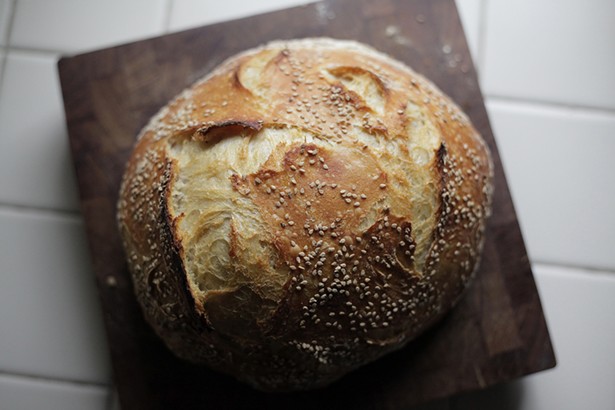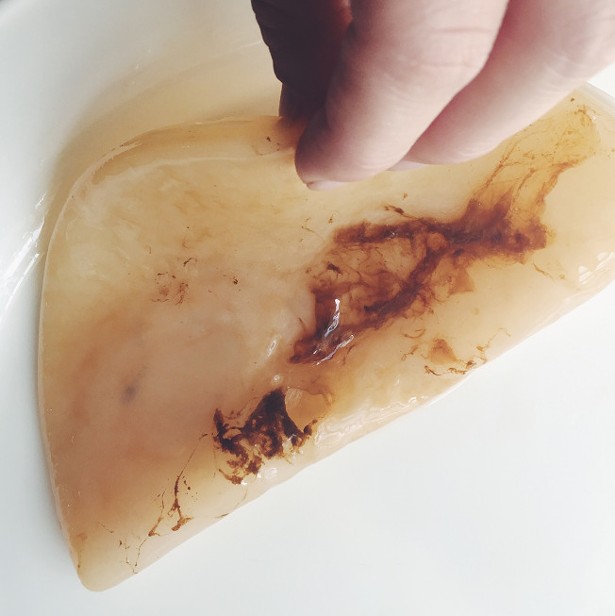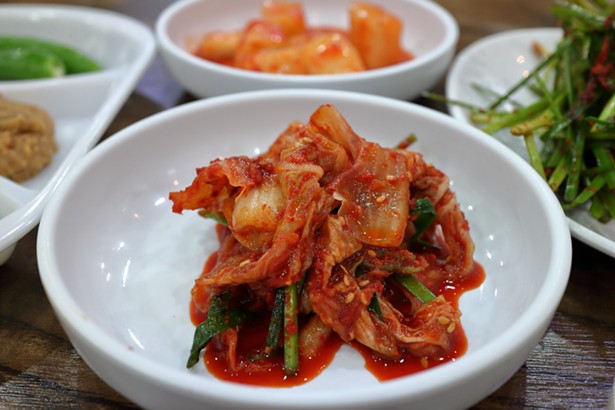With all this time trapped at home and grocery store runs becoming an increasingly perilous “outing,” it’s a great opportunity to experiment in the kitchen and try making your own pantry staples.
A little background: During a hiatus between editing positions, I launched a fermentation business out of my home called Farmhouse Kitchen CSA, delivering weekly baskets of probiotic-rich goodness to friends and neighbors. It was delightful and exhausting, and I learned a ton.
As you will see, many of the below recipes are fermented. That’s because during this pandemic, as we all do our part to #flattenthecurve, it is our collective imperative to stay as healthy as possible. Research championed by the Human Microbiome Project has revealed that our bodies are host to hundreds of types of bacteria and other microorganisms that evolved along with us and continue to play a complex (if still nebulous) role in our survival. Everything from digestion to mental health to protein synthesis and, importantly, modulation of our immune systems rely on these microscopic populations. Eating fermented foods is a key way to supplement and strengthen our gut biome.
From apple cider vinegar to that perfect loaf of country bread, here are five pantry staples to make at home while you’re in quarantine. Skip a trip to the grocery store and learn something while you’re at it.
Kombucha
Kombucha is the unlikely health soda hero of the 21st century. With its probiotic-boosting, immune-bolstering qualities, this fermented black tea beverage has gained global popularity with everyone from kindergarten teachers to hungover Millennials and middle-aged dads.
To make your own at home you need a SCOBY (symbiotic culture of bacteria and yeast).
You can often order these online , though many businesses have ceased shipping operations. If you have store-bought raw kombucha in the house, it often comes with a wee SCOBY baby—or will develop one if given the chance. Leave the bottle (with some kombucha in it) out on the counter for a few days with the cap unscrewed. If you see a filmy, rubbery filmy half-dollar appear, congratulations! You’ve got a SCOBY. As it grows, feeding off of tea and sugar, this “mother” will continue to serve you through this and all future batches of kombucha.
There are many, many, MANY kombucha recipes out there and nearly endless flavor combinations you can try. Here is a basic recipe from Bea Rue. For more ideas on kombucha, kefir, natural sodas, and homemade wine, read our feature from food blogger and photographer Peter Barrett.
Sourdough Bread
My personal bible for all things sourdough is the self-titled bread cookbook from iconic Bay Area bakery Tartine. In case you’re just dipping your toes in the bread world and don’t want to splurge on the book, the New York Times has published the recipe for the classic Tartine Country Loaf (unfortunately their paywall is still up.) For your at-home bread venture, the core things you’ll need are sourdough starter, a Dutch oven, and a pretty hefty supply of flour. (Bread flour is ideal for its increased protein content, which is necessary to give the loaf its airy structure—King Arthur’s is a great, widely available brand.)
In this time of lockdown, the one thing you probably can’t order online or pick up at the grocery store is your starter. Fear not—these cultures have been started in homes around the world for thousands of years. Self-proclaimed “fermentation revivalist” Sandor Katz has an excellent wild-fermented sourdough starter guide in his 2012 tome, The Art of Fermentation, which Hudson Valley blogger and web designer Bea Rue has adapted on her site. In this same post, she also provides a no-knead sourdough recipe, which is significantly less time-intensive than Tartine’s classic method.
If this all feels a bit (or a lot) daunting, why not just make yourself “regular” bread? This artisanal bread recipe from Sally’s Baking Addiction uses instant yeast to create flakey, rustic loaves without requiring any fancy equipment or a whole lot of time.
Apple Cider Vinegar
Apple Cider Vinegar is a domestic workhouse, useful in everything from cleaning to hair-washing to immune-boosting tonics and salad dressing. And making your own ACV couldn’t be easier—just apple peels, water, and honey plus time and you’ve got your own homemade pantry essential. Like kombucha, ACV ferments create a mother, which you can include in future brews to speed up the process. This simple recipe goes over the absolute basics, but for more in-depth ruminations on at-home vinegar making check out Peter Barrett’s blog.
Kimchi
In Korea, every region (and likely every household) has its own kimchi variation. This spicy, tangy cabbage dish is lacto-fermented, using salt to kickstart the bacterial digestion process. Cabbage is the unchanging core, but you can add just about veggie you want to this pickled preserve. The most classic recipes involve Napa cabbage, daikon, garlic, ginger, chives or scallions, and chili flakes. Peter Barrett adds carrots and radishes in his go-to version. Many recipes call for fish sauce or shrimp to add umami, sesame seeds, cucumber, and even squid. If you do decide to order the book, The Art of Fermentation also offers up several variations, accompanied by Katz’s insightful, endearing, and often self-effacing pontifications.
This two-step process begins with quartering the cabbage and leaving it to soak in salty water overnight (or for several days depending on the temperature), encouraging the “good” bacteria (lactobacillus) to grow, while killing off the bad bacteria that would cause it to rot. After your kitchen begins to smell sorta farty (yes, farty), you’re ready for step two where you make a slurry with all your other ingredients and work it into the cabbage leaves one by one. After this, it’s just waiting. While some traditional kimchis are fermented for years and even buried underground. Your kimchi will be edible in a few days, but the complexity of flavor, tang, and probiotic richness will only continue to increase with time—if you can wait before gobbling it all up!
Body Cream
OK so this one isn't edible (well, actually, many versions are). But as people stay home, they are cutting out excess trips to the store to replenish things like body lotion. But self-care is soothing in this troubling time, and we’re probably all a little extra dry these days, what with all the handwashing and Purell-ing. If you’ve run out of face/body cream, or you’re feeling up for a DIY challenge, why not try making your own body butter at home?
There are many recipes you can make right in your kitchen using supplies and equipment you already have on-hand. My personal go-to is this aloe-vera based lotion recipe from Wellness Mama. This super simple, all-purpose moisturizer recipe uses just two wholesome ingredients: beeswax and coconut oil. In the below video tutorial, iconic Hudson Valley herbalist Dina Falconi walks you through making a luxurious, all-natural body cream right in your own kitchen.













